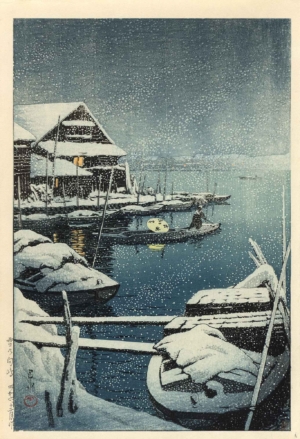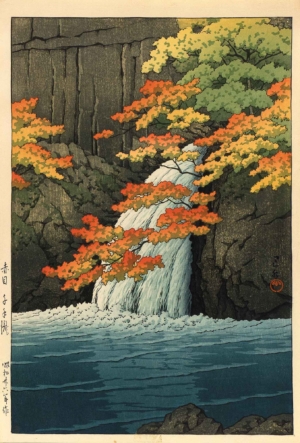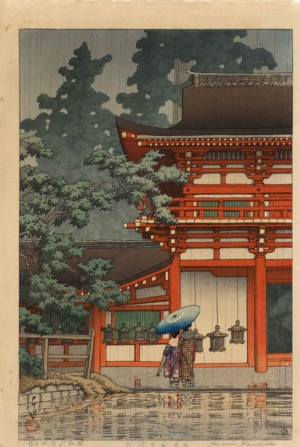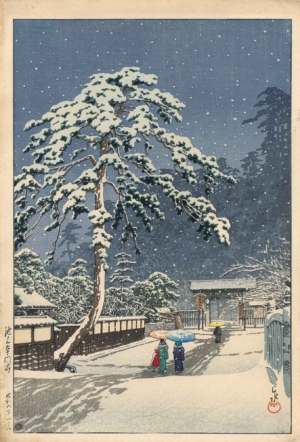Kawase HASUI (1883–1957) is one of the most successful shin-hanga artists in Japan. As the son of a merchant’s family, he learned to transfer designs onto porcelain at the age of 14, but returned to his parents’ business after a year. In the following years, he studied with various masters and became involved with “Nihonga (Japanese painting)”, a Japanese art movement in which traditional Japanese painting techniques were to be preserved. However, artistic influences from Western painting were also adopted. Kawase Hasui began working with woodcuts in 1917 and worked closely with Watanabe Shozaburo, the pioneer of the Shin-Hanga movement, throughout his life. Most of Hasui’s early prints were lost in the 1923 earthquake. He made sketches and watercolors on his travels. Over the course of his life, he created more than 600 woodcuts with atmospheric landscape and city views. He became particularly famous for his nocturnal scenes and snowy landscapes. In 1956, the artist was the first woodcut artist to be honored by the Japanese government as a “Living National Treasure”, one of the highest honors an artist can receive in Japan.
Kawase HASUI (1883–1957) is one of the most successful shin-hanga artists in Japan. As the son of a merchant’s family, he learned to transfer designs onto porcelain at the age of 14, but returned to his parents’ business after a year. In the following years, he studied with various masters and became involved with “Nihonga (Japanese painting)”, a Japanese art movement in which traditional Japanese painting techniques were to be preserved. However, artistic influences from Western painting were also adopted. Kawase Hasui began working with woodcuts in 1917 and worked closely with Watanabe Shozaburo, the pioneer of the Shin-Hanga movement, throughout his life. Most of Hasui’s early prints were lost in the 1923 earthquake. He made sketches and watercolors on his travels. Over the course of his life, he created more than 600 woodcuts with atmospheric landscape and city views. He became particularly famous for his nocturnal scenes and snowy landscapes. In 1956, the artist was the first woodcut artist to be honored by the Japanese government as a “Living National Treasure”, one of the highest honors an artist can receive in Japan.







Recent Comments